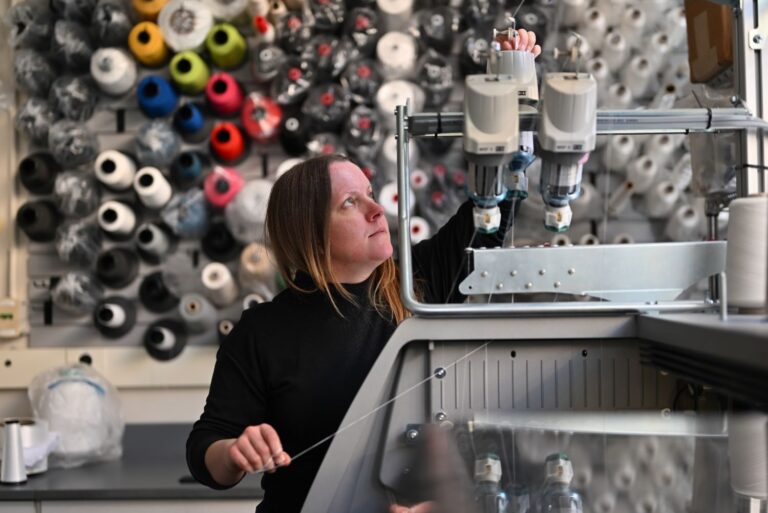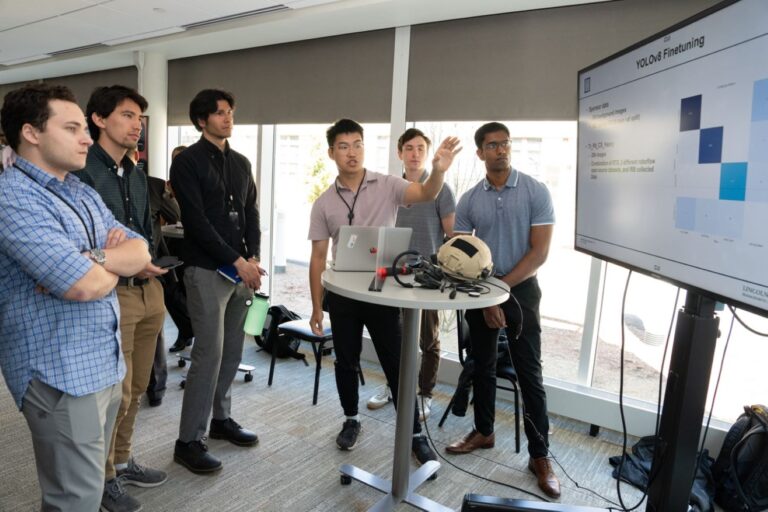How Big Tech Corporations Are Aiming to Dominate in Education Tech Market
In the US, education expenditures are just over 6 percent of GDP, or nearly $1.2 trillion. Similar to the healthcare industry, the education market is heavily influenced by the government at all levels. As one might expect, there is a large difference between education spending and edtech spending. The bulk of education expenditures goes toward labor (teachers and administrators) and physical facilities. The research firm HolonIQ estimates that less than 3 percent of education spend is allocated to technology. It is discernibly recognized that America tech companies are endeavoring to seize the education tech market in a digital era.
The America education tech market is a diverse and rapidly growing industry with a large runway across the business lifecycle, from early-stage startups to middle-market companies to publicly traded companies. It continues to garner a lot of attention not only from long-time industry veterans but from generalist investors as well. Across the three main education categories (PreK-12, post-secondary, and corporate training), technology is infused throughout the life of a learner.
This article will elucidate the scope of education tech market and outline how big tech companies like Google, Microsoft and Apple are battling in education tech market to take the biggest share of the pie.
What is Education Tech Market?
Today, classrooms have moved beyond the unwieldy desktops that were once the norm and are now tech-infused with tablets, interactive online courses and even robots that can take notes and record lectures for absent students. The potential for scalable individualized learning has played a vital role in education tech market augmentation. The way students learn, how they interact with their classmates and teachers, and their shared enthusiasm for the same subject are not a one-size-fits-all situation. Everyone learns at their own pace and in their own style. And it looks like technology applied in the classroom is still able to extensively outlast and ascend quickly – 92% of teachers believe technology is going to have a distinctive impact on how they educate and disseminate the knowledge in the near-term educational transformation. For that reason, it is very important to grasp the benefits that education tech brings in the form of enhanced communication, collaboration and the quality of education in general.
Education technology (EdTech) is a term used to delineate an industry that combines education and technological progress, revolutionizing the conventional landscape of education. EdTech not only allows educational institutions to serve a larger and more diverse audience, but also enables educational participants, both teachers and students, to promote relationships in an interactive and innovative fashion and to create a more engaging, comprehensive and personalized learning experience. Edtech tools make it easy for teachers to create individualized lesson plans and learning experiences that promote a sense of generosity and increase the learning capabilities of all students, regardless of their age or learning abilities.
This influx of edtech tools are changing classrooms in a variety of ways: edtech robots are making it easy for students to stay engaged through fun forms of learning; IoT devices are being hailed for their ability to create digital classrooms for students, whether they are physically in school, on the bus or at home; even machine learning and blockchain tools are assisting teachers with grading tests and holding students accountable for homework.
EdTech not only has extensively impacted on student learning but also teacher administration. For instance, there was an increase in the teaching of online courses from 30 percent in 2016 to 42 percent in 2017. Additionally, online collaboration has shown an overall reduction by 20 percent in disciplinary actions and dropout rates. Nearly one-third of the faculty in the research agreed that online courses can achieve learning outcomes, compared to traditional classroom teaching. It is evident that technology has unlocked the power of education beyond imagination. With the recent high pace of advancement in technology EdTech it starting to discover its potential and will continue to rapidly develop in the near future.
How Google, Microsoft and Apple Are Taking Competitive Advantage in The Battle for U.S Classrooms
The United States has the largest number of edtech companies and the most venture capital funding for those companies. Through an analysis of data taken from the business research platform Crunchbase, the report found 1,385 edtech companies in the U.S. – 43 percent of the total number of edtech companies globally. Edtech is augmenting, with the total market value worldwide set to reach $252 billion this year, Forbes reported. The U.S. also features the most total venture capital funding for edtech companies with $8.3 million. In the U.S., the online education company 2U led the way as the most funded edtech company with more than $400 million. Thirteen of the top 20 most funded edtech companies are headquartered in the U.S., according to the report.

New York City was found to have the highest density of edtech companies globally with 155. San Francisco and Chicago are ranked second and third with 137 and 54, respectively. Several companies urged schools and teachers to focus on the implementation of additional technology-focused education and curriculums focused on the sciences.
Among the reason tech giants are scrambling to get their gadgets into schools: It is a big business opportunity. The education technology market is expected to reach $252 billion by 2020, according to a report published by education-focused technology conference host EdTech Global and advisory firm IBIS Capital. But there’s potential upside even after students leave the classroom and turn into fully-fledged consumers, too.
Business interests aside, tech companies’ push into innovation might offer them a much-needed PR boost. As issues like privacy, cyberbullying and screen addiction continue to dominate the conversation around technology, pitching plans to help students learn could boost Silicon Valley’s stature in the eyes of many across the country. That education is also a lucrative market means that the race among tech giants to reign supreme in schools will only get more intense moving forward.
The education-tech market is massive. According to a study by Technavio, the U.S. education-tech market is expected to reach $43 billion this year, with much of the growth coming in K-12 education. To not missing out on any opportunity, Apple, Google and Microsoft are battling out constantly for their dominance. They all want to make consumers feel that they are a part of a brilliant future when they select their technology in classroom, resulting into better profits, loyalty and impression of the company.
Apple used to have the most devices in U.S. schools, but Google soared to the top after the release of the Chromebook in 2011. It was a great invention with a student friendly price tag and compatible technology to deal with every school related tasks. In 2018, Chromebooks made up 60 percent of all laptops and tablets purchased for U.S. K-12 classrooms, up from just 5 percent in 2012. Microsoft is second at 22 percent, followed by Apple, with 18 percent of shipments to U.S. schools in 2018, according to data from Futuresource Consulting.
These devices together have changed the environment of classrooms for better. It has become relatively easier for students and teachers to understand various topics and discuss them while seeing them in real with the help of videos, AR and 3D technology. To take the Hamlin School in San Francisco as an example for leveraging of technological advancements in classroom, Rachel Davis sixth grade science class uses Google’s Virtual Reality Expeditions app on an Apple iPad to explore the layers of the earth. The all-girls private K-8 school has an iPad for every student. Starting in sixth grade the girls take their iPads home along with all the Google apps they use for assignments.

Because Hamlin is a private school, it was able to afford an iPad for every student, but for most public schools’ price can be prohibitive. Google is in the lead largely as its Chromebooks are the cheapest option for classrooms. But Apple and Microsoft are making moves to try to change that.
In response to the current scenario, Apple introduced more possibilities after announcing the 9.7-inch iPad 6, which was priced at $299 for students (down from $329 retail). It provided the opportunity to seamlessly work within the apps with the help of new accessories along. Students are now able to write and storing notes with the help of Apple pencil, taking screenshots of visuals for the iBook with high-definition camera and have productive fun in classrooms with attached keyboard. The device is so powerful, superlight, budget friendly and easy to use that public schools across U.S loved it more than anything.
Apple’s iOS devices may not be as widely used in schools as Google’s Chromebooks or Windows laptops. Nevertheless, it is believed that the iPad’s Apple Pencil stylus integration could give the Cupertino, Calif.-based iPhone maker an advantage. With its newest iPad, Apple is showcasing how the Pencil can be used to sketch and handwrite in slideshow presentations and reports, among other tasks.
Some would say Apple’s latest push into the education market is a return to its roots — Apple’s Macintosh lineup was a mainstay in classrooms nationwide through the ’90s, after all. But the iPad announcement is also indicative of a larger trend in Silicon Valley: Big tech firms see the classroom as their next major battleground.
Apple’s success in the classroom will in part depend on whether or not schools invest in creative learning applications like the ones Apple demonstrated on stage this week, which tracks mobile computer shipments in the education market.
But when it came to sharing, Google won the game with its comprehensive G-Suite and targeting the most important parts of education. The company provided a platform to everyone in the class, especially teachers, to coordinate and manage their work in a much better way. They made their apps to work efficiently on every device so when today, there is immense amount of appreciation for iPad and tablets, Google again remains top favorite for students due to its widespread software strategy.
“When we decided to build G-Suite for education products, we decided to focus on teachers to make their jobs easier. There’s research that shows that the biggest impact in a child’s education is the teacher. And that’s the way to impact outcomes.”, said by Jonathan Rochelle, Director of Product Management at Google.

Outside U.S, the clear-cut winner is Microsoft with 57% of classroom sales in 2018. This is largely due to emerging markets that lack the internet connection for Chromebook to work or iPads to show off itself.
Anthony Salcito, Vice President of Education at Microsoft said that: “Over the last five years or so we’ve been really reinvigorated in terms of the needs of schools and recognize the importance of technology to transform the futures of our students going forward.”

Realizing the significance of bringing technology to more classrooms, Microsoft played their move with Surface devices. Microsoft also announced a new Lenovo tablet that allows students to write on the screen with a number two pencil. At $289, it is likely meant to compete with Apple’s $299 iPad for schools. Besides that, Microsoft has also jumped into the classrooms by making students learn how to code for games. With interactive courses, children are taught the very basics of computer language and the amount of interest it is gathering, the future of computer science indeed looks very bright.
Notwithstanding, the biggest benefit of this clash is to the schools as students are given a variety of technology to choose from for their work. It does not matter whoever wins in future, the classroom of today has the potential to make humans learn about the world on a whole new level and also transform them into well-equipped geniuses.
While Google, Microsoft and Apple continue to vie for dominance teachers at Hamlin will turn to whatever blend of tech makes the most sense for its students.
“We used to just have the ability of taking a test or making a model in a project and explaining and now they’re having to draw things and manipulate things in 3D objects. And to me that seems more challenging and how they can explain it and how clear they are on what the concepts are. They see the world so differently than we did and I’m really excited to see what happens to them as they continue to grow in the skills especially in high school and beyond.”, said by Rachel Davis, 6th Grade Science Teacher at Hamlin School.
The Bottom Line
Edtech is a big and diverse industry with a large runway of opportunity across the business lifecycle, though ongoing risks (regulation, funding cycles, competition) should remain top of mind for investors. Advances in online learning and emerging technologies will continue to improve educational outcomes. Ultimately, the best companies, investors, and impactors in this space will be those who put the student at the center. Finding ways to reduce costs, deliver quality pedagogy, and demonstrate impactful outcomes will prove to be the long-term winners as the edtech market grows and matures.









